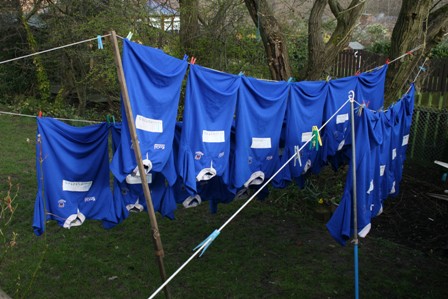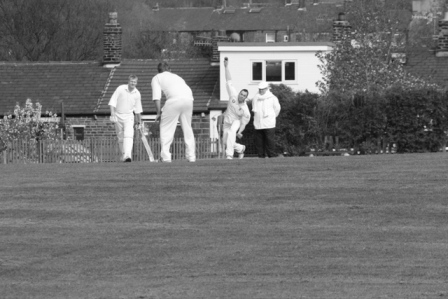
Are we really listening to people’s lives?
A large number of innovations and major developments in sport have taken place outside the ‘official’ sports sector. Svend Elkjaer argues that now is the time for sports development and leisure managers to become more responsive to people’s needs and learn from others how to attract people into our leisure centres and community sports clubs.

At the time of writing Sport England are rumoured to be going down the 'sports for sport's sake' route and this should be seen as an opportunity for sports development to recognise that if we are to increase participation in physical activity ‘official’ sport must become much more innovative and customer-focused. The last few years have seen a number of exciting examples of innovation in sport and physical activity coming from the private sector and more unorthodox providers, such as charities.
There are a number of examples. Powerleague’s five-a-side football centres grew their business by 24% in 2007 and made an operating profit of £7 million without ever receiving a penny in public funding. They attract over 125,000 footy-crazy men every week at 43 centres nationwide and are also doing a roaring trade in kids’ birthday parties. Dermot Collins of the FA says, “Participation rates in the small-sided game have overtaken eleven-a-side. At the heart of this growth has been investment from the commercial sector rather than traditional providers, which is very encouraging.” In Stockport the privately operated Ball Hall now has 180 netball and 120 basketball teams operating their own leagues. Last July St Michael’s Hospice in Harrogate organised their first 10k midnight walk with 1,200-plus walkers raising £114,000. On 17 June more than ten thousand people and their dogs will participate in the annual 3.5 miles Butchers Doggie Walk at South Shields. And yes, it is in the Guinness Book of Records.
Notice that the two walks are organised by non-sport organisations. As far I am concerned we should be running similar events all across the UK. Getting people physically active and raising money for charity: you can’t do better than that!
Here are five words you rarely see in sports plans yet which are vital to getting people active.
Innovation: New ways of encouraging physical activity should be encouraged within ‘established’ sport. Just look at extreme sports and at beach sports, which have enjoyed tremendous growth outside traditional sport, often linked to a rise in the number and breadth of unorthodox sport deliverers.
Passion: One thing sport has in abundance is passion. Whether you are a supporter of a non-league football club or a 46-year-old netball player, the passion for sport is something no other area of our lives can compete with.
Fun: We are becoming too serious about sport. We have forgotten that we play and watch sport because we enjoy it. I know coaches who are technically excellent but who are lousy communicators and who scare players away because of their ‘we must be winners’ attitude. Last year the Rugby Football Union got nine thousand former players back to playing rugby by focusing on the fun and social side of playing the game, not by asking them to be the next Dallaglio. Read what cricketer Mark Ramprakash said about his dancing partner, Karen Brady, a couple of weeks into his appearance on Strictly Come Dancing: “ I can’t praise her highly enough. When I first came in I was very reserved and quiet and she tried to put me at ease and make me feel relaxed so we could get a rapport. It took a few days but, with encouragement and patience, she managed it. Every session she was so enthusiastic and she made it varied and fun, and that’s an attitude that could really make a crossover to cricket. Cricket practice can be so technical and stereotyped. Everyone’s so worried about the left elbow – is it in the right place? Cricket’s a game, something to be enjoyed!”
Customer: Have you ever tried to book a ticket for a lesson at your own leisure centre? Or buy a ticket at the club you run’s next home game? Or tried to get a drink at half-time? Or asked a steward for directions? What is it like to walk into your club house as a first-time guest? Are you made to feel welcome? Would you want to come back? Customers have choices, needs and preferences. Look after them or somebody else will.
Technology: There’s a man in South London who organises raves. He has a database of 76,000 people’s mobile phone numbers which he uses when he promotes his events. There’s an “appreciation society” for Primark, the discount fashion chain on FaceBook with 104,000 members. In sport we are still putting up posters in libraries. Mobile technology and social media is now easy and inexpensive to use. If we are to create sustainability in sports development, we must use technology to inform and engage.
Over the years I have worked and spoken with hundreds of sports administrators and sports development people across the UK and there are a large number of dedicated and passionate people out there who care deeply about sport and getting people physically active. We must start thinking differently if we are to reach the targets of getting more people more active and develop an Olympic legacy.
Start listening to people’s lives and do something different. Today.
Svend Elkjaer is marketer, trainer and missionary with every intention of changing the world. His chosen vehicle is the Sports Marketing Network.
© Copyright of all material on this site is retained by The Leisure Review or the individual contributors where stated. Contact The Leisure Review for details.
